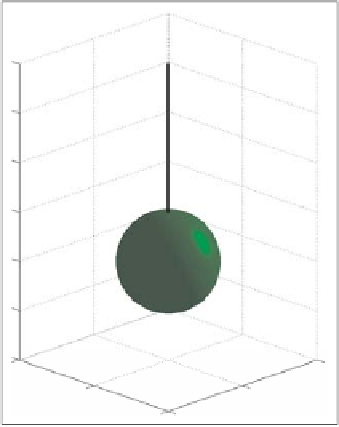Image Processing Reference
In-Depth Information
Fig. 12.6. Does the apparent motion of the specular light represent the motion of the sphere?
unwrapping discontinuities are avoided by use of the derivatives of the phase that is
continuous in contrast to the phase itself.
The motion estimation using affine model (six parameters) is also dense, although
its support region is generally much larger than the translational model (two param-
eters) to yield a reliable estimate. By contrast, it can describe more complex motion
fields than the translational model. However, it is also true that when the image sup-
port is large, even the affine model will be quickly unsufficient, typically because the
image will cover two or more regions moving independently according to different
motion models. The situation with several motions require an estimation of the mov-
ing regions, called layers, and the motion parameters, [3, 9, 30, 60] simultaneously or
in alternation, where one is improved while the other is kept unchanged. In a layer
there is a single motion following a motion model with fixed but unknown parame-
ters. This happens in TV like image sequences where the images will usually contain
several independently moving objects and/or regions, e.g., see Fig. 12.5.
12.12 Appendix
The Rotating Sphere Experiment
That optical flow fields may not necessarily identify motion fields faithfully has been
known, as is often illustrated by the rotating sphere phenomenon, Fig. 12.6. In this
experiment, a hanging sphere with uniform color, illuminated by a light source, is
brought to rotation about the vertical axis. An image sequence generated by an ob-
serving camera that is fixed in the room will identify this motion as a zero motion

